When my sister became engaged this past year, she and her fiancé decided to get married in historic San Miguel de Allende, Mexico. And so we traveled there in October to enjoy several wonderful days with family and friends, culminating in my sister’s beautiful wedding to her groom.
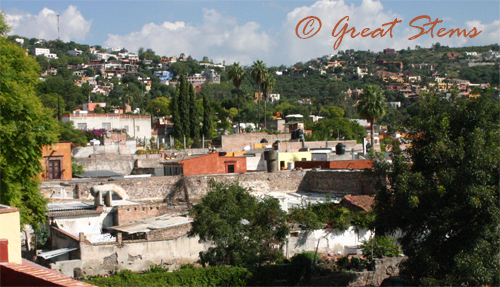 San Miguel is often referred to as the Heart of Mexico, partly because of its central location. But its role in Mexican independence, its religious icons and festivals, its historic value, its impressive art, and its sheer beauty and tranquility have all made San Miguel a truly beloved city. The lure of San Miguel is powerful — from the moment we arrived, we understood why it draws in people from all over Mexico and visitors from all over the world.
San Miguel is often referred to as the Heart of Mexico, partly because of its central location. But its role in Mexican independence, its religious icons and festivals, its historic value, its impressive art, and its sheer beauty and tranquility have all made San Miguel a truly beloved city. The lure of San Miguel is powerful — from the moment we arrived, we understood why it draws in people from all over Mexico and visitors from all over the world.
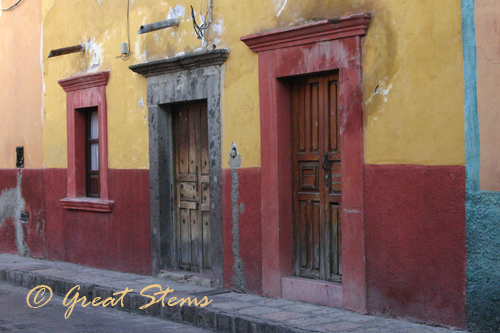
Declared a Historic Monument in 1926, San Miguel is still webbed by old narrow cobblestone streets that require good walking shoes to traverse. Its colonial buildings and roads are untainted by neon signs or traffic lights.
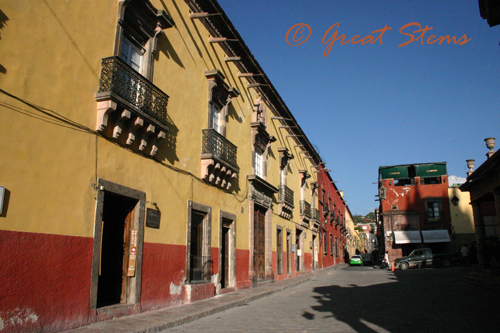
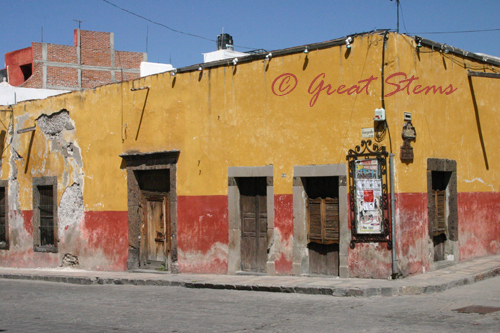
The colorful buildings are sometimes in disrepair in appearance, but a finished look is not often a priority.
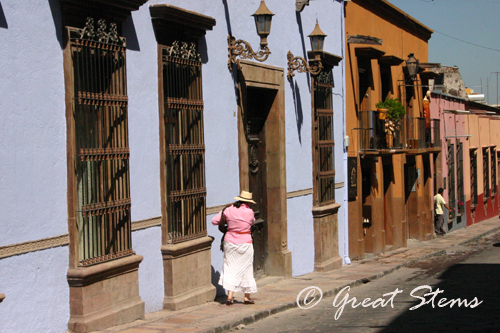
Behind unremarkable exterior doors are often spectacular garden-filled courtyards, complete with gorgeous fountains.
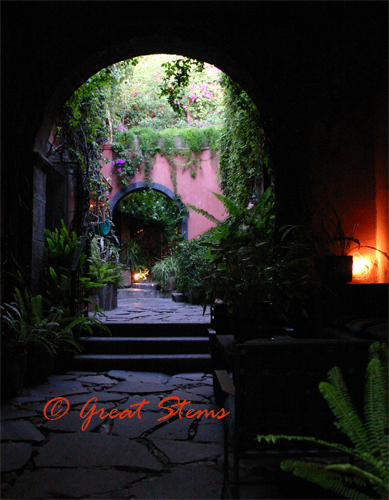
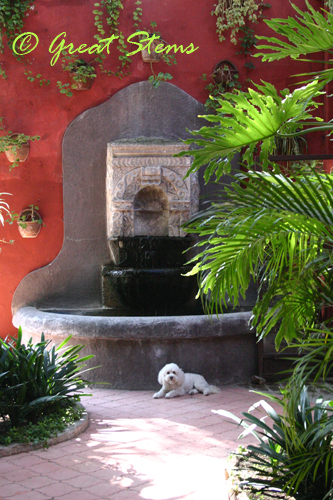
El Jardin is the central plaza of San Miguel and the gathering place for residents and visitors alike.
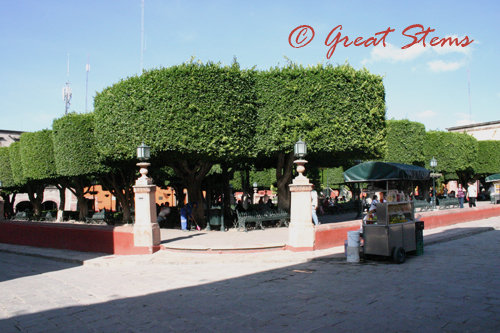
Towering over El Jardin is the most famous landmark of the city, the Parroquia. This historic church has a pink, Gothic-like façade that seems in contrast to the traditional colonial aspects of town, but the design of the façade is remarkable. It was designed by an untrained, illiterate but very skilled master stone mason who based his plans on postcards of gothic cathedrals from Europe.
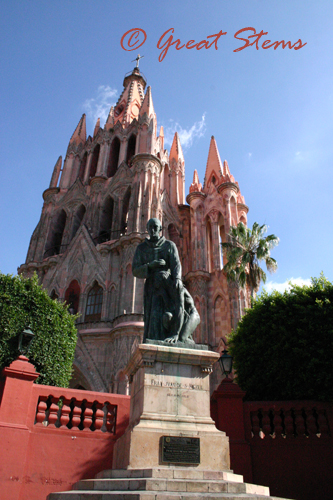
For major festivities like those honoring San Miguel Arcángel, the town’s namesake, tall platforms called xuchiles are carefully constructed and carried to the church.
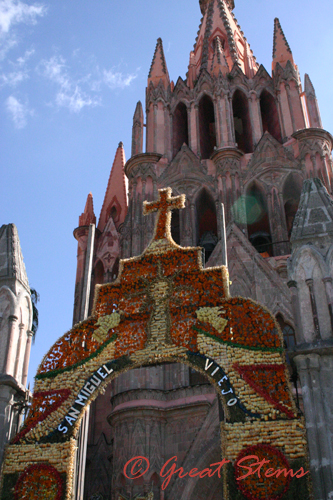
They are made of intricately woven bits of cucharilla (“little spoon cactus”), juniper, and marigold set on a structure of bamboo-like strips.
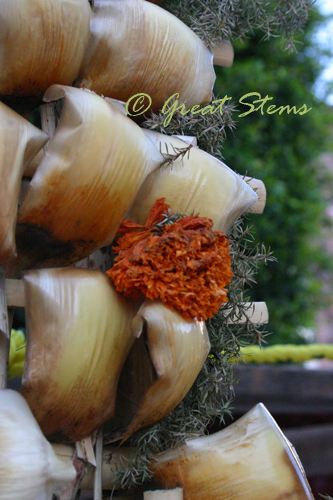 Inside, the Parroquia holds historic statues and murals, often simple in nature, with remarkable arched ceilings of brick and stone.
Inside, the Parroquia holds historic statues and murals, often simple in nature, with remarkable arched ceilings of brick and stone.
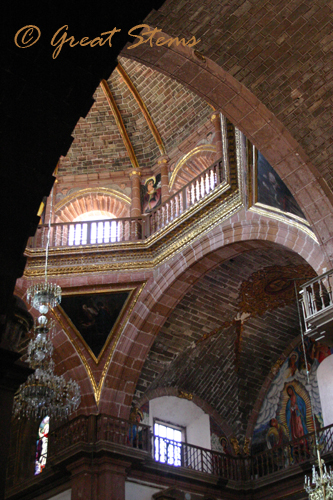
There are many other churches throughout San Miguel, including the Templo de Las Monjas. The dome of this church was designed by the same stone mason who designed the Parroquia façade. This dome is based on the Les Invalides in Paris.
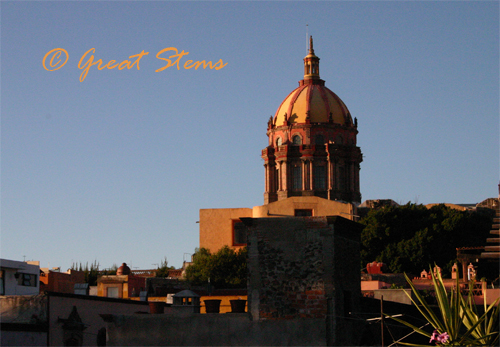
Within the Oratorio de San Felipe de Neri tower, you can see some of the many church bells that ring throughout San Miguel at any given time of day or night, be it for mass, fiestas, saints’ days, or other events. During our visit, we were woken up by constant bell-ringing, fireworks, mariachi bands, and cheers at 6 a.m. Sunday morning. Yes, you read that right.
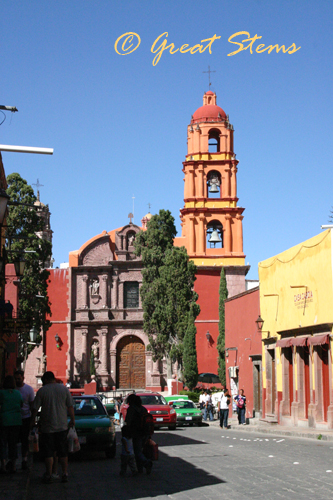
Walking through town, evidence of outstanding craftsmanship can be seen all around — exquite wood carvings, metalwork, stonework, and more leave passersby in awe.
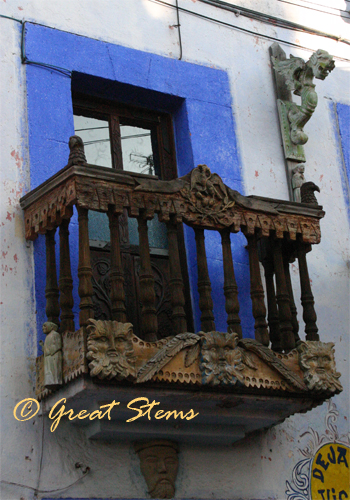
Take, for example, the door and stonework of one of the most famous buildings in San Miguel, the Canal house, the former colonial home of a very wealthy family.
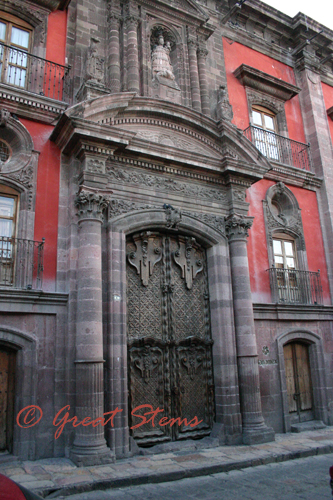
But beautiful works can be seen all through town.
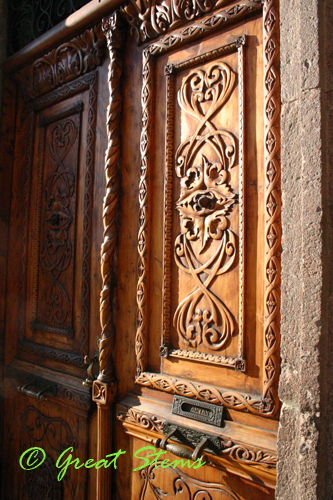
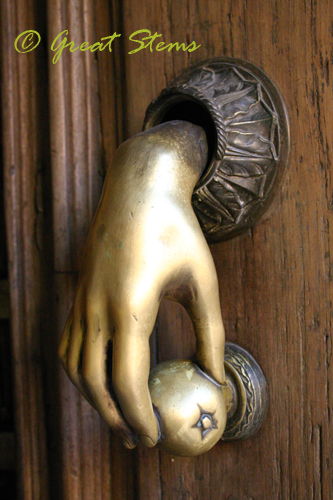
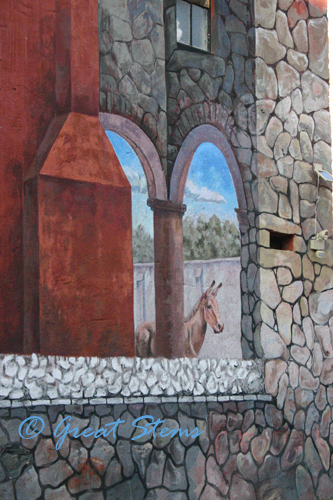
While countless shops line the cobblestone streets of central San Miguel, many visitors prefer to shop at the vendors found in the Mercado.
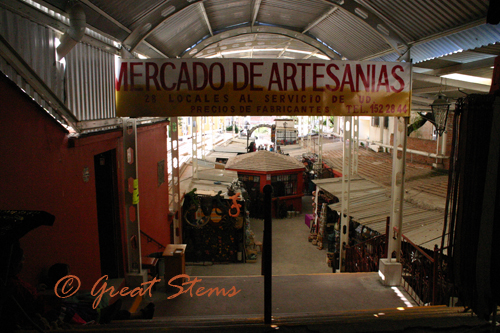
And as one would expect, the food is fantastic in San Miguel. I can say that I couldn’t get enough of the finest guacamole and freshest tortilla chips I’ve ever had. Below is a tamale wrapped in banana leaves instead of corn husks. I’ll be honest about this particular dish — I think they overcooked mine — but I loved that it was so different from the ones we get in the U.S.
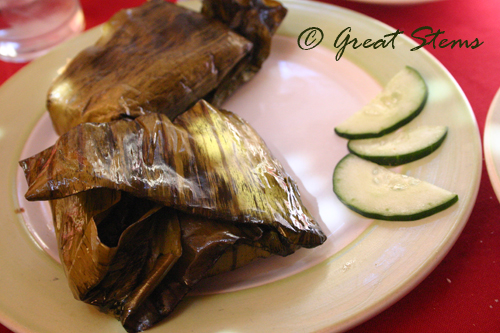 And you know there were margaritas to be had.
And you know there were margaritas to be had.
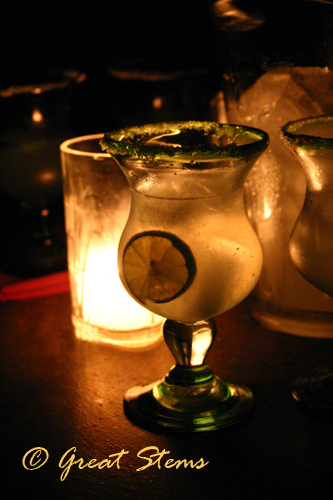
The surrounding countryside is rugged terrain. Evidence of erosion through drought and grazing is visible. In fact, the area is in a severe drought, but those fountains still run throughout town.
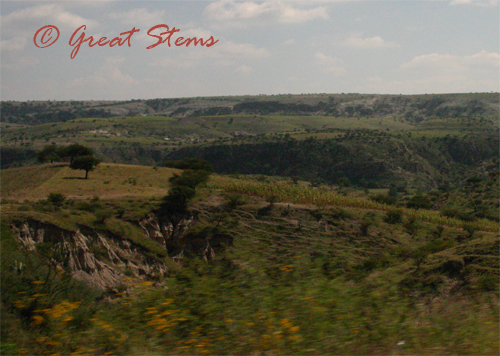
Brightly colored flowers cover walls, fill pots, sweep across rooftops, and decorate open spaces.
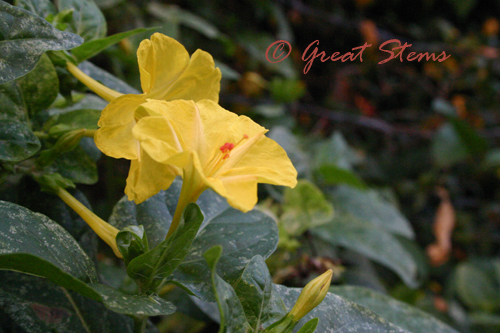
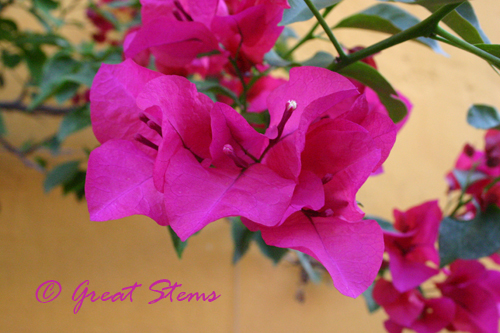
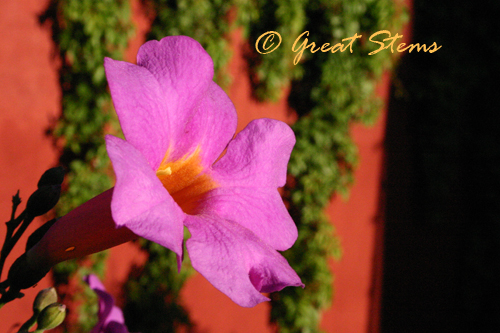
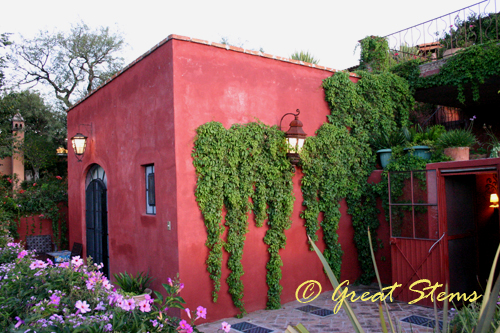
But I couldn’t get enough of the cactus.
Driving through the countryside, one does a bit of a double-take when realizing that the trees in the fields are actual cactus. They grow taller than the mesquite trees. I believe the species is Opuntia ficus-india. Some of these cactus trees could also be found in gardens.
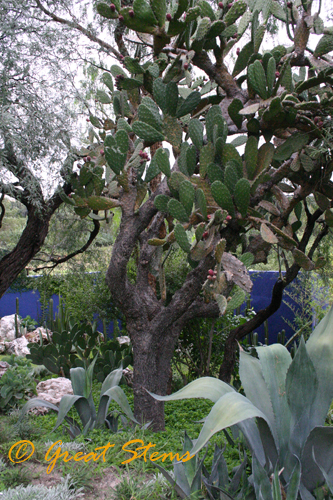
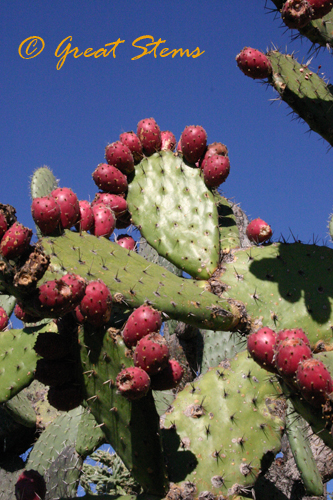
This cactus had the largest pads I’ve ever seen.
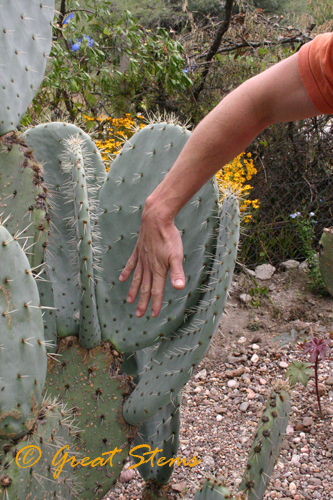 Also awe-worthy were the agave, growing 8+ feet tall.
Also awe-worthy were the agave, growing 8+ feet tall.
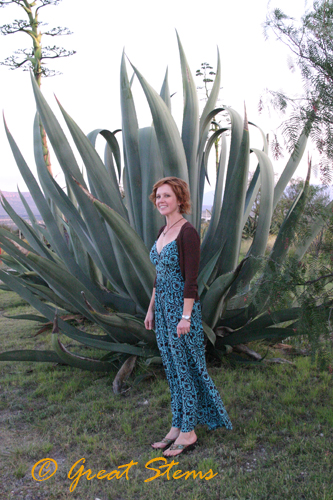
Orange blooms sometimes grew from the tops of mesquite trees, but sadly they are from a kind of mistletoe, Psittacanthus schiedeanus, a parasite that will likely eventually kill the tree.
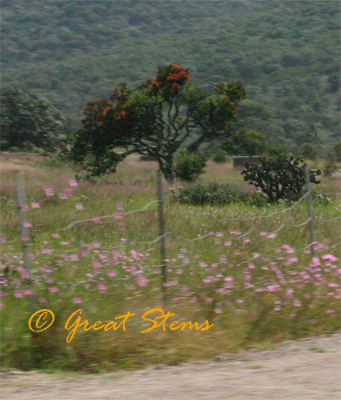
Cattle sometimes strolled by, as did dogs. Dogs in Mexico often run loose, in town, on ranches, and along the road. They were so much nicer than our barking American dogs stuck on leashes.
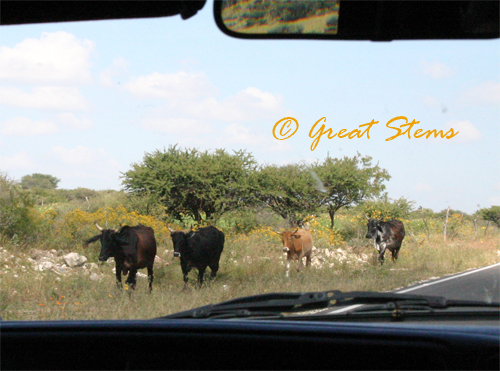
We did get to see a bunny, too, and burroes, and this black widow (found as my sister got ready for her wedding — oh, life’s amusing tricks!). At least I think it’s a black widow — I didn’t try to get it to roll over so I could clearly check for an hourglass.
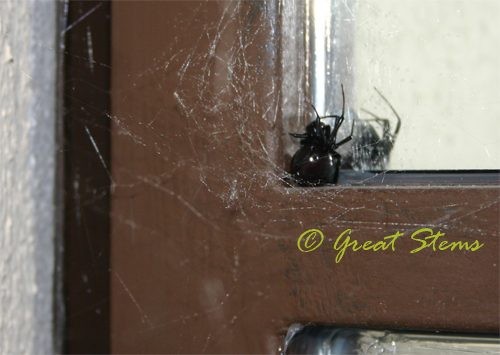
Our wedding group was fortunate to be able to tour a couple of private homes filled with art. This home was as creative in architecture as the art inside and around the gardens.
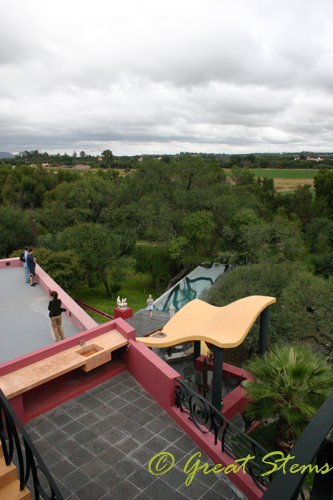
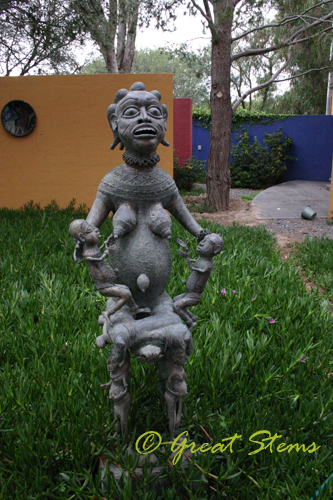
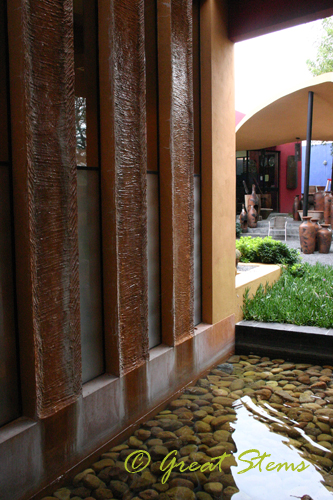
This puppy could melt the heart of anyone.
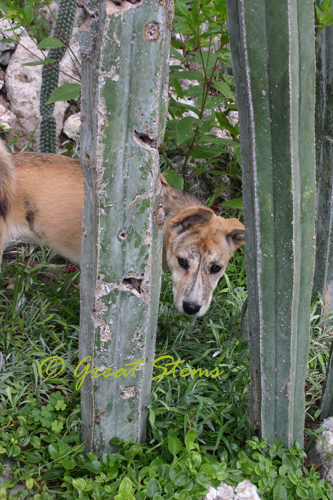
At a second home, beautiful mosaics and other art covered walls, counters, roofs, and floors — even the fireplace.
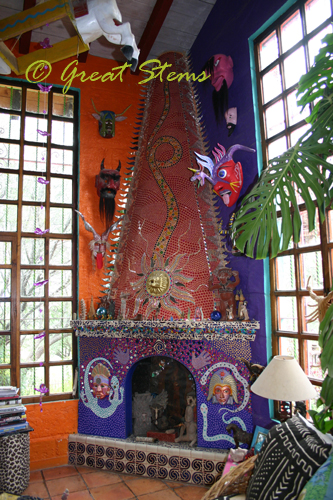
Its whimsical style and gardens reminded me so much of Austin, I felt right at home.

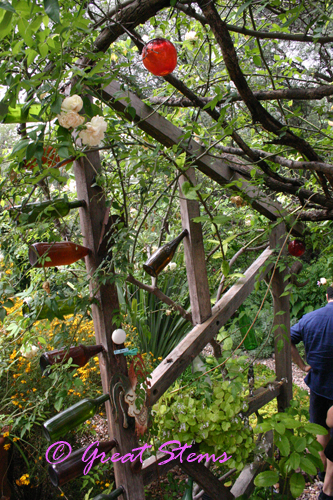
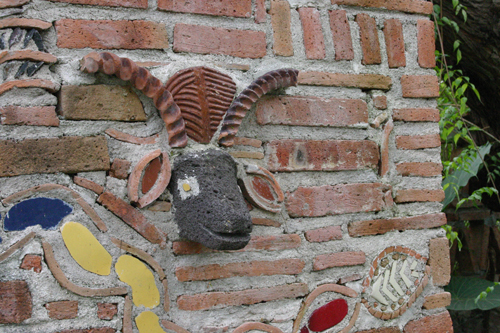
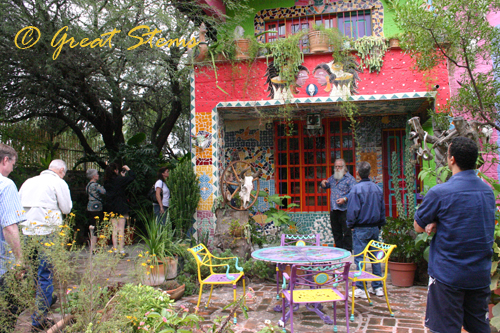
This flowering plant was my favorite of the trip — it is called Spanish Flag Vine, or Exotic Love Vine (Ipomoea lobata). From what I read, it would have to be grown as an annual in Austin.
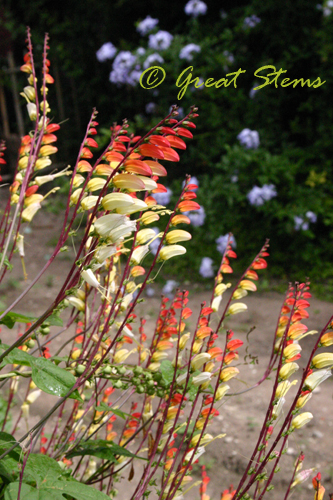
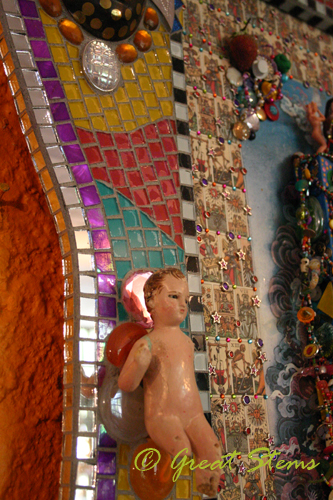
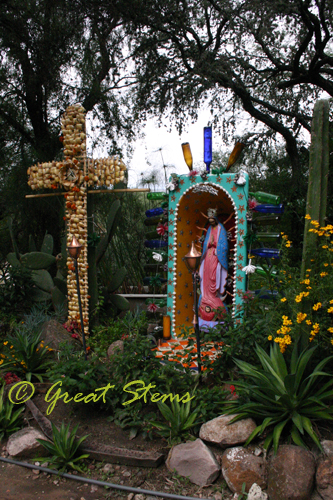
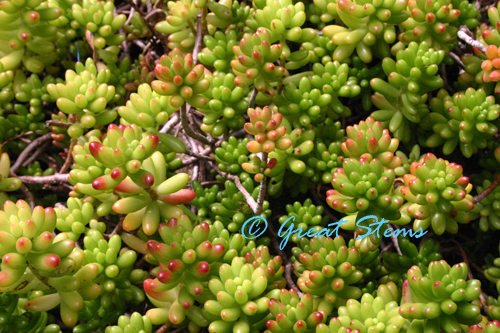
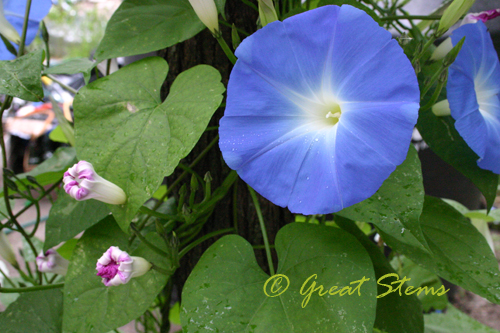 Whole walls and fences were sometimes created out of organo cactus (organ pipe).
Whole walls and fences were sometimes created out of organo cactus (organ pipe).
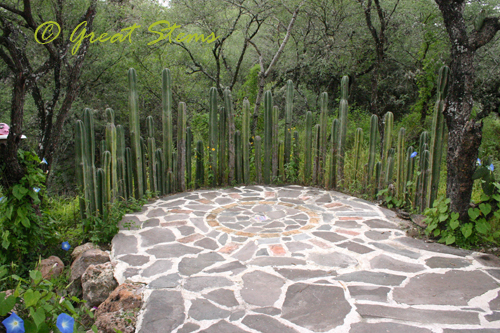
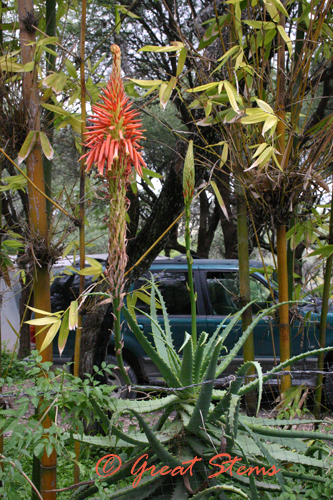
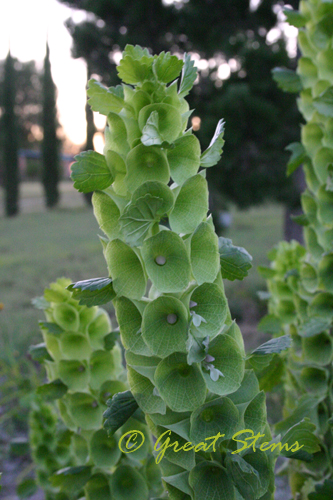
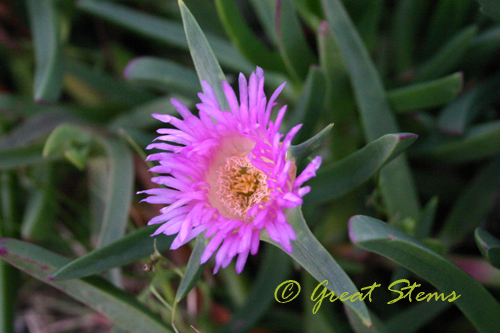
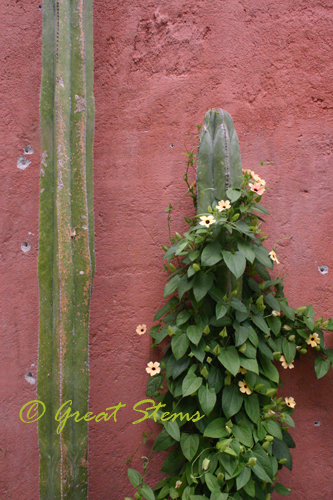 Our family and friends had a delightful trip, and the wedding was intimate and beautiful. San Miguel has another reason to be called the Heart of Mexico — it steals the heart of anyone who visits it.
Our family and friends had a delightful trip, and the wedding was intimate and beautiful. San Miguel has another reason to be called the Heart of Mexico — it steals the heart of anyone who visits it.

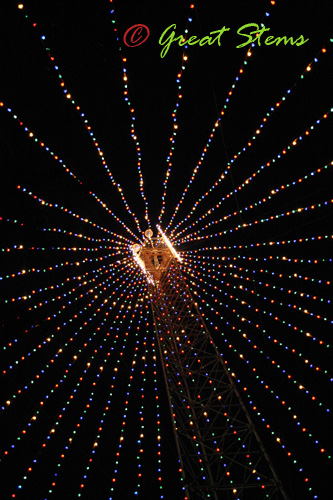 And while that’s quite pleasant, you’ve just got to do more. It’s all about the spin, baby, the spin. And it’s a chance for even the grown-ups to be kids again.
And while that’s quite pleasant, you’ve just got to do more. It’s all about the spin, baby, the spin. And it’s a chance for even the grown-ups to be kids again.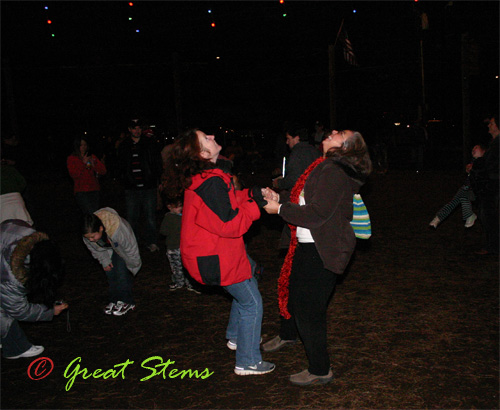




 It’s possible the same effect could be achieved with enough of the proper egg nog.
It’s possible the same effect could be achieved with enough of the proper egg nog. 
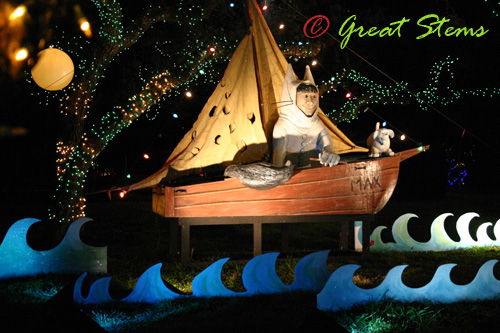
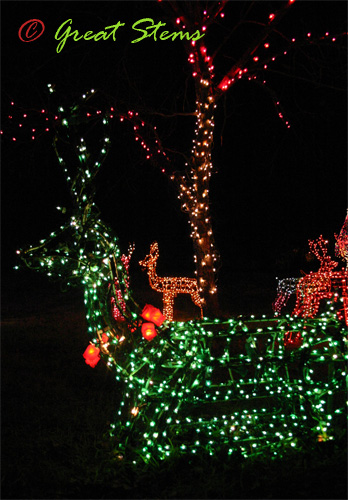
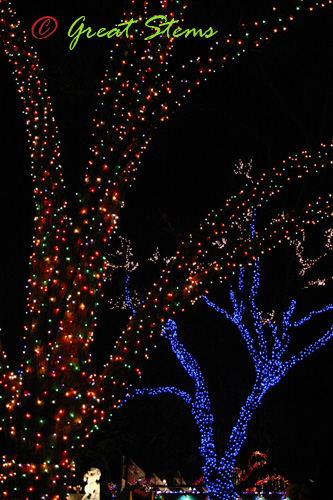 I admit to missing some of the light-effects and one of my favorite displays, the ice statues (which have been used instead for stage decorations this year), but all in all, I much prefer the new trail, and that it’s more energy-wise makes for a feel-good feeling. The dinosaur family is still there, yay — my other favorite.
I admit to missing some of the light-effects and one of my favorite displays, the ice statues (which have been used instead for stage decorations this year), but all in all, I much prefer the new trail, and that it’s more energy-wise makes for a feel-good feeling. The dinosaur family is still there, yay — my other favorite.

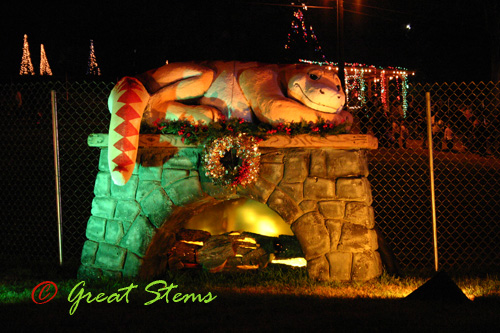
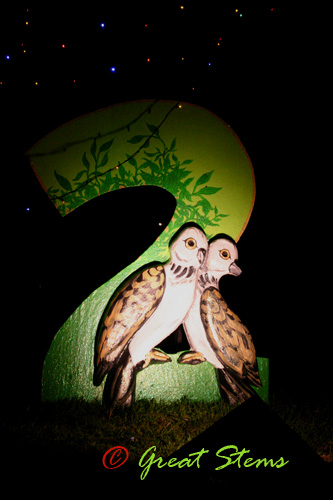

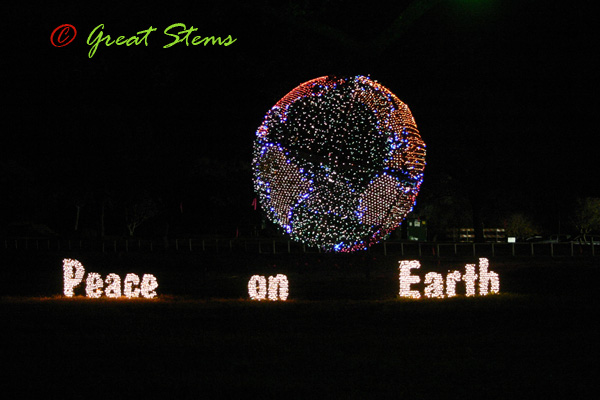

 I’ve really been thrilled with the enthusiasm everyone has had about the habitat project. What makes me happiest is seeing how excited the kids are. Just wait until the wildlife finds about it!
I’ve really been thrilled with the enthusiasm everyone has had about the habitat project. What makes me happiest is seeing how excited the kids are. Just wait until the wildlife finds about it!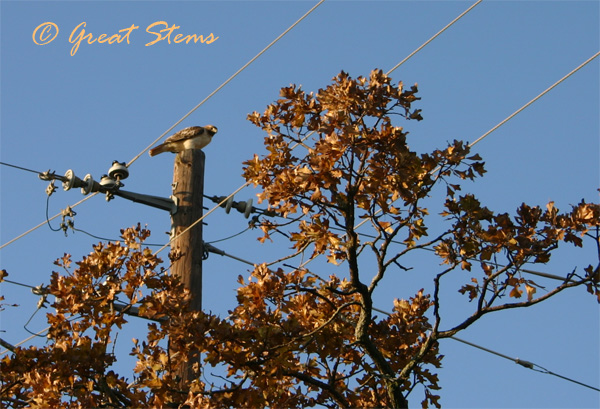
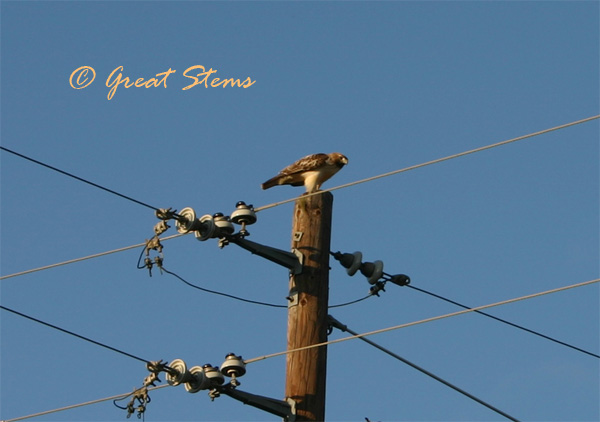
 San Miguel is often referred to as the Heart of Mexico, partly because of its central location. But its role in Mexican independence, its religious icons and festivals, its historic value, its impressive art, and its sheer beauty and tranquility have all made San Miguel a truly beloved city. The lure of San Miguel is powerful — from the moment we arrived, we understood why it draws in people from all over Mexico and visitors from all over the world.
San Miguel is often referred to as the Heart of Mexico, partly because of its central location. But its role in Mexican independence, its religious icons and festivals, its historic value, its impressive art, and its sheer beauty and tranquility have all made San Miguel a truly beloved city. The lure of San Miguel is powerful — from the moment we arrived, we understood why it draws in people from all over Mexico and visitors from all over the world. 








 Inside, the Parroquia holds historic statues and murals, often simple in nature, with remarkable arched ceilings of brick and stone.
Inside, the Parroquia holds historic statues and murals, often simple in nature, with remarkable arched ceilings of brick and stone.








 And you know there were margaritas to be had.
And you know there were margaritas to be had.







 Also awe-worthy were the agave, growing 8+ feet tall.
Also awe-worthy were the agave, growing 8+ feet tall.
















 Whole walls and fences were sometimes created out of organo cactus (organ pipe).
Whole walls and fences were sometimes created out of organo cactus (organ pipe).



 Our family and friends had a delightful trip, and the wedding was intimate and beautiful. San Miguel has another reason to be called the Heart of Mexico — it steals the heart of anyone who visits it.
Our family and friends had a delightful trip, and the wedding was intimate and beautiful. San Miguel has another reason to be called the Heart of Mexico — it steals the heart of anyone who visits it.